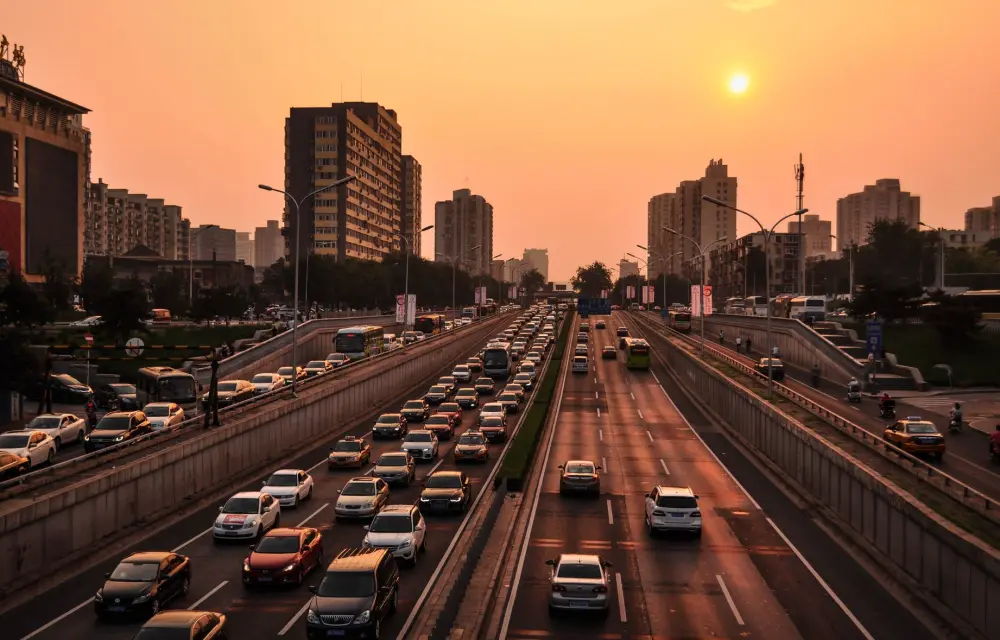Living Near a Busy Road Can Raise Risk of Premature Death by 20 Percent
 By Study Finds
By Study Finds
Living near a busy road can increase the risk of premature death by a fifth, according to new research. Scientists from New York University say people exposed to above average levels of air pollution were 20 percent more likely to die over the next 14 years, mainly from cardiovascular disease.
The study also shows that rates of heart attacks and stroke rose by 17 percent among the affected. The findings opens the door to screening programs and preventive measures that improve chances of survival. They were based on 50,000 people over 40 living in the Golestan region of Iran. Participants were mostly poor and agreed to have their health monitored during annual visits dating back to 2004.
“Our study highlights the role key environmental factors of indoor/outdoor air pollution, access to modern health services, and proximity to noisy, polluted roadways play in all causes of death and deaths from cardiovascular disease in particular,” says senior author Dr Rajesh Vedanthan, a cardiologist at NYU Langone Health, in a statement. “Our findings help broaden the disease-risk profile beyond age and traditional personal risk factors.”
Using wood burners or kerosene stoves to cook food that were not properly ventilated through a chimney also increased risk of death from cardiovascular disease by 36 and 19 percent, respectively. Living far from specialty medical clinics with catheterization labs able to unblock clogged arteries was another aggravator.
Risk of death rose by one percent for every 6.2 miles of distance. In Golestan, most people live more than 50 miles away from such modern facilities. Results also show that the one in three who lived within 500 metres of a major roadway had a 13 percent increased risk of death.
The study, published in PLoS ONE, identifies environmental factors that pose the greatest risk to heart and overall health. It also adds much-needed scientific evidence from people in low and middle-income countries. Most studies focus urban populations in high-income countries with much greater access to modern health care services.
“These results illustrate a new opportunity for health policymakers to reduce the burden of disease in their communities by mitigating the impact of environmental risk factors like air pollution on cardiovascular health,” says lead author Michael Hadley, a fellow in cardiology and incoming assistant professor of medicine at Mount Sinai.
Other environmental factors analyzed, including low neighborhood income levels, increased population density and too much nighttime light exposure, were not independent predictors of risk of death. It contradicts previous research in mostly urban settings that have suggested otherwise. The volunteers completed a detailed lifestyle questionnaire and a physical exam. There were more than 2,700 cardiovascular deaths and nearly 6,000 from all causes over the follow-up period.
E-Course: Conquer Sugar, Manage Diabetes and More (Ad)
The researchers analyzed data gathered through to December 2018. They then created a predictive model on overall mortality rates and death risk from heart disease. They plan to continue the project by applying it to other countries with the aim of fine-tuning capacity.
The tool could serve as a guide for evaluating the effectiveness of environmental, lifestyle and personal health changes in reducing mortality rates worldwide. According to the World Health Organisation, a quarter of global deaths are now attributable to environmental factors including poor air and water quality, lack of sanitation, and exposure to toxic chemicals.
Environmental hazards were responsible for an estimated 11.3 million deaths in 2019, and 5.1 million of them were from cardiovascular disease.
“This study advances our understanding of which environmental factors may be most detrimental to cardiovascular health,” says Hadley. “By combining many environmental factors in a single model, we could better control for interactions between risk factors, and identify which environmental risk factors matter most for cardiovascular health.”
Air pollution killed almost 6.7 million people across the world in 2019 alone. Tiny toxic particles get into the bloodstream. They travel to the lungs, heart, brain and other major organs – and have been linked to cardiovascular disease, cancer, COPD (chronic obstructive pulmonary disorder) and Alzheimer’s disease.
“Our work demonstrates how publicly available data can be used to create risk maps for individual communities, even in rural, low-income settings,” says Hadley. “Eventually, we expect health systems to use similar approaches to create environmental risk maps for the communities they serve. The data can empower physicians to estimate environmental risks posted to their patients and offer individualized recommendations to mitigate risk.”
South West News Service writer Mark Waghorn contributed to this report.



